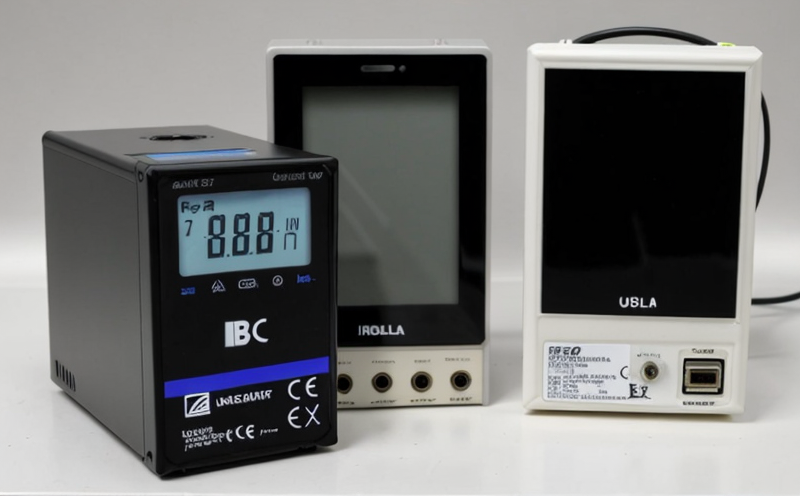IEC 62660-3 Consumer Electronics Lithium-Ion Cell Electrical Testing
The IEC (International Electrotechnical Commission) standard IEC 62660-3 sets out the requirements for electrical testing of consumer electronics lithium-ion cells. This comprehensive test protocol is essential for ensuring product safety, reliability, and performance in a wide range of devices including mobile phones, laptops, tablets, and other portable electronics.
The standard covers a series of tests designed to evaluate the electrical properties of lithium-ion cells under various conditions. These include charging, discharging, overcharge, overdischarge, short circuiting, and thermal cycling. Each test is critical in identifying potential weaknesses or hazards that could arise during normal use or in adverse environmental conditions.
During testing, a lithium-ion cell undergoes rigorous procedures to simulate real-world scenarios. For instance, the charging profile must precisely match the manufacturer's specifications to ensure compatibility with chargers and power sources. The discharging tests assess the cell’s ability to deliver energy under different load conditions, which is crucial for battery life estimation.
Overcharge and overdischarge tests are particularly important as they help identify the maximum safe limits of voltage and current that a lithium-ion cell can withstand without risking damage or fire hazards. Short circuiting tests evaluate how well the protection circuits in the device handle a short circuit, which is essential for preventing catastrophic failures.
Thermal cycling tests simulate the temperature variations encountered during normal use, such as from cold storage to high ambient temperatures. This helps determine the thermal stability and durability of the battery under extreme conditions. By subjecting the cells to these varied environments, manufacturers can ensure their products meet stringent safety standards set by IEC 62660-3.
The testing process involves precise instrumentation and a controlled environment that closely mimic real-world usage scenarios. This ensures accurate results and consistent quality across different batches of batteries. The use of advanced measurement techniques allows for the detection of even subtle changes in electrical characteristics, which could indicate potential issues with the battery cell.
IEC 62660-3 also emphasizes the importance of thorough documentation and reporting. Detailed records are kept throughout each test to provide a comprehensive overview of the cell’s performance. This information is invaluable for quality control teams as it helps in identifying trends or anomalies that may require further investigation or corrective actions.
Compliance with IEC 62660-3 is not only essential for meeting regulatory requirements but also enhances consumer trust by demonstrating a commitment to safety and reliability. By adhering to these standards, manufacturers can ensure their products meet the highest international benchmarks for electrical performance in lithium-ion cells used in consumer electronics.
Benefits
The benefits of adhering to IEC 62660-3 are multifaceted and extend across various aspects of product development, production, and quality assurance. By implementing this standard, manufacturers gain several advantages:
- Enhanced Safety: Ensures that lithium-ion cells meet stringent safety requirements, reducing the risk of fire or explosion.
- Increased Reliability: Helps in identifying potential weaknesses early in the development process, leading to more robust and durable products.
- Better Quality Control: Provides a standardized method for testing that ensures consistent quality across different batches of batteries.
- Improved Consumer Trust: Compliance with international standards enhances consumer confidence, fostering brand loyalty.
- Regulatory Compliance: Ensures that products meet the necessary regulatory requirements, avoiding potential legal issues and fines.
- Innovation Facilitation: By identifying performance limitations early, manufacturers can focus on improving battery technology and design.
These benefits collectively contribute to a more efficient and effective product development cycle, ultimately leading to higher quality consumer electronics.
Environmental and Sustainability Contributions
- Eco-friendly Design: By ensuring that batteries meet stringent safety standards, IEC 62660-3 promotes the development of more environmentally friendly designs. Manufacturers are encouraged to minimize material use and improve recyclability.
- Reduced Waste: The standard helps in reducing waste by promoting longer battery life and durability, thus extending product lifespan.
- Energy Efficiency: Testing protocols encourage the development of more energy-efficient batteries, which ultimately leads to reduced power consumption and lower carbon footprints.
- Sustainable Manufacturing Practices: Compliance with IEC 62660-3 can drive manufacturers towards adopting sustainable manufacturing practices that minimize environmental impact.
The implementation of these benefits contributes significantly to the overall sustainability goals, making consumer electronics more environmentally responsible and sustainable for future generations.
Use Cases and Application Examples
| Use Case | Description |
|---|---|
| Mobile Phone Testing: | This involves testing the lithium-ion cells used in mobile phones to ensure they meet IEC 62660-3 standards. The tests simulate real-world usage scenarios such as charging, discharging, and thermal cycling. |
| Laptop Battery Testing: | Testing laptop batteries ensures they comply with the standard, providing reliable performance and long-lasting use in various environments. |
| PDA Device Testing: | Portable data assistants (PDAs) are also subject to IEC 62660-3 testing to ensure their batteries perform optimally under different conditions. |
| Digital Camera Battery Testing: | Batteries used in digital cameras are tested for electrical performance and safety compliance with the standard. |
| Other Portable Electronics: | The scope of testing includes a wide range of portable electronics such as tablets, GPS devices, and other consumer electronics that use lithium-ion cells. |
These use cases highlight the importance of IEC 62660-3 in ensuring that all lithium-ion cells used in consumer electronics meet the highest international standards for electrical performance and safety.





